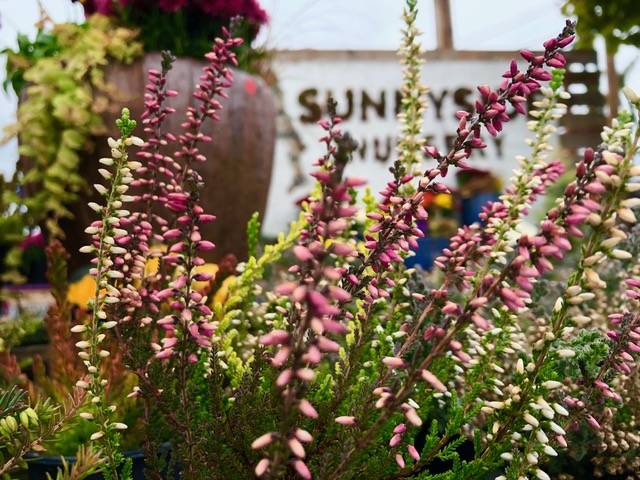First off, I suspect you would like an explanation of what the heck is a “bud-blooming” heather: It is a type of Calluna (a commonly planted summer-blooming heather that is in many of our gardens) whose buds never fully open but still manage to show color – often for months during the fall and into early winter. These types of heathers will look fresh for months and fill a gap as summer-blooming heathers fade and before winter heathers start to show color. They make great additions to container plantings or incorporated into our landscapes – they are also easy to grow, provided they have good drainage. Bud-blooming heathers are used throughout Europe to decorate grave sites in the fall (over 90 million are sold annually in Germany alone). Up until recently, varieties were not winter hardy and would turn brown after the first hard frost. German plant breeder Kurt Kramer saw the need to develop hardy varieties. He started to bring new crosses that displayed the long-blooming color of the bud-blooming varieties with the addition of colorful foliage. These new varieties will easily withstand any minimum temperatures that our Northwest winters might usher in. Most of these bud-bloomers are compact and only grow 12- to 16-inches tall and a bit wider as they mature. Like all heathers, a good shearing in the spring after they bloom will keep them tidier and produce a more uniform-looking plant. Flower colors range from white to shades of pink and probably the most alluring feature is the incredible variations in foliage – from blackish-green to shades of yellow, orange, or red and even silver. The colors grow even richer as temperatures drop. Of all the new varieties, I like “The Garden Girls”. Names like Zeta, Zalina, Zulu, Zilly, Golden Angie, Claire and Amethyst are all varieties with colorful foliage. Others have developed varieties called “Beauty Ladies” and “Sea Star.” While these new heathers will help fill a gap in the transitional time between summer and winter, I think the single-most creative application of these plants is when they are used in containers in […]






